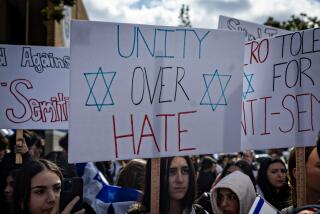A year like no other for L.A. crime: Homicides surge, robberies and rapes drop
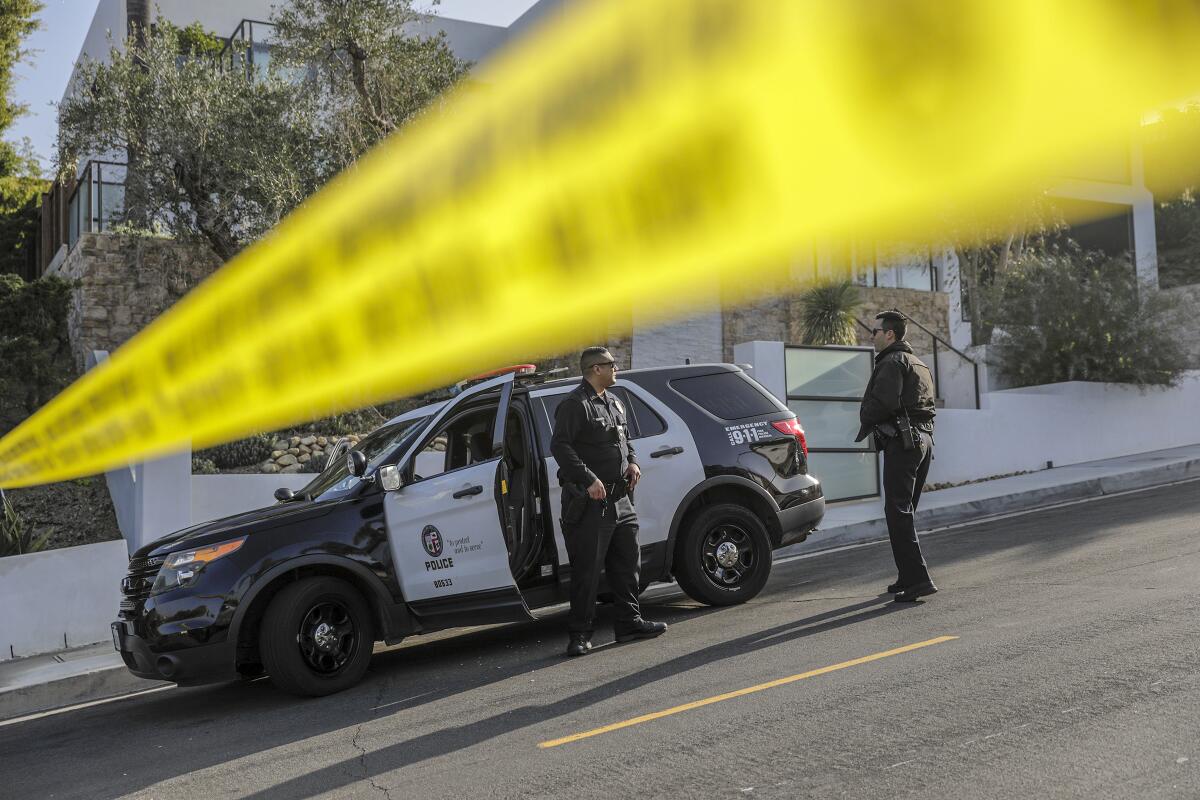
- Share via
As commanding officer of the Los Angeles Police Department’s data-driven Compstat division, Capt. Paul Vernon’s job is to track crime trends in L.A. — highlighting problems and pinpointing solutions in order to optimize the department’s effectiveness.
It has not been easy this year, he said, as crime — like so much in 2020 — went absolutely haywire.
Homicides, shootings and car thefts spiked, while robberies, rapes and lesser property crimes dropped off. The swings were dramatic, too, with killings hitting a decade high after years of sustained reductions, and shootings increasing nearly 40%. Meanwhile, robberies declined by 17%, and reported rapes fell 25%.
The COVID-19 pandemic — which has kept many businesses closed and many people at home — was clearly a major factor, though analysts say the full explanation is more complex.
Eager to understand what was happening, Vernon plotted the largest shifts along a timeline of major 2020 events, including the arrival of COVID-19 in California, the government’s stay-at-home orders and this summer’s mass protests against police brutality.
He landed on several theories as to what may be driving the changes — such as a reduction in overall movement, strains in illicit drug markets, more gunmen opening fire on rivals at close range and police officers being stretched thin in high-crime areas amid citywide emergencies, operational changes and officers quarantining or missing work due to illness.
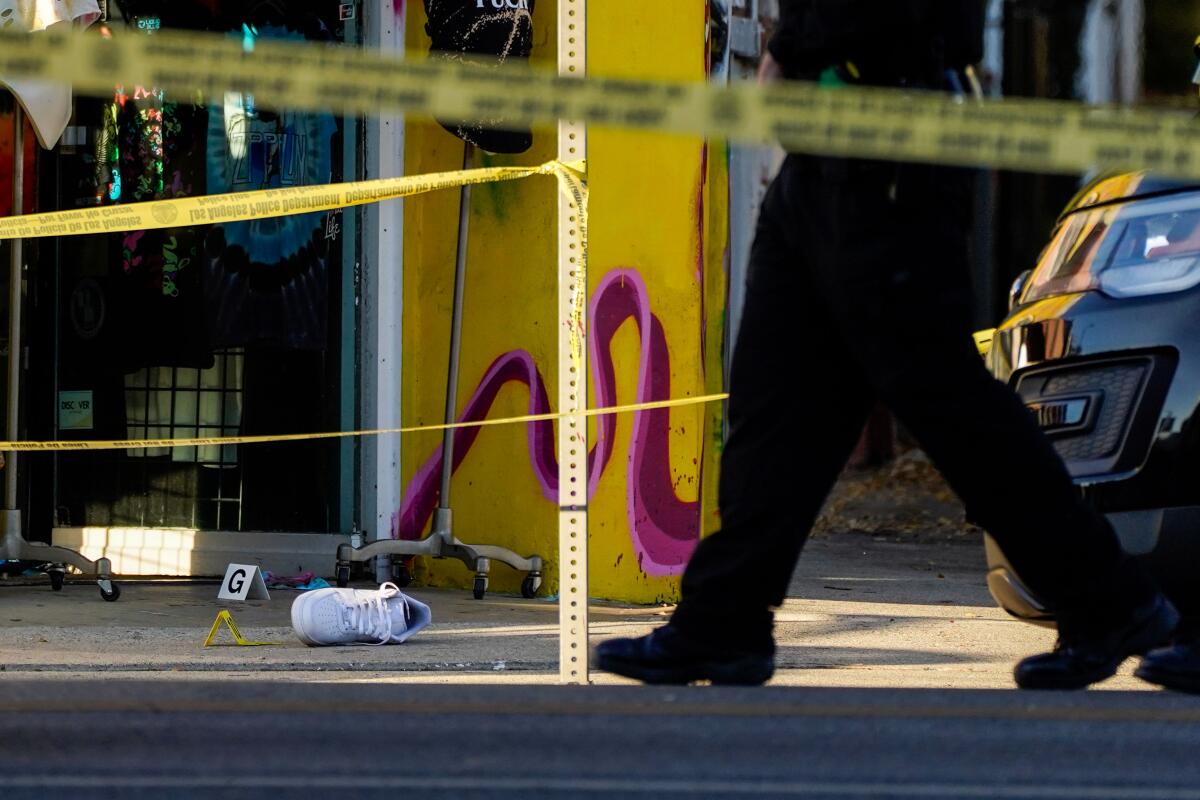
Still, in a year of such intense upheaval, potential factors were everywhere, Vernon said, and little was clear about the exact causes of any particular swing — or whether crime would revert to pre-COVID patterns once vaccines roll out and the world regains balance.
“You can only make inferences [based on] what’s happening,” Vernon said, “and what’s not happening.”
What is most clear is that the pandemic played a massive role: Everything changed in March.
Through January and February 2020, gun violence was slightly elevated over the same period in 2019. Other crime was relatively flat. Then, the state issued its shutdown order as COVID-19 began to creep into local communities, and crime patterns radically shifted.
Suddenly, property crime began dropping as businesses shuttered and people stayed home. Street robberies fell as people were “no longer out on the street to be walking targets,” Vernon said. Assaults, including sexual assaults, dipped, and other violent crime appeared to slow as well.
To some observers, the trends seemed counterintuitive, given the fear that property crimes would rise as Los Angeles was battered by retail closures and unemployment that at times approached 20%.
However, for a brief period, the only real exception to the decline in crime was car theft. With vehicles left parked for weeks at a time, and fewer people outside, cars were easy targets, police said. They noted that suspects, some homeless, were stealing cars and dumping them nearby — joyriding as much as anything else. They also saw individuals who were arrested for stealing cars get released back into the community under new rules to stem the spread of COVID-19 in jails, then get arrested again for the same crime.
As the weather began to warm, shootings and homicides started spiking, and fast. The increases intensified as the summer progressed and have largely continued ever since, with a brief September lull offset by intense bouts of bloodshed in recent weeks.
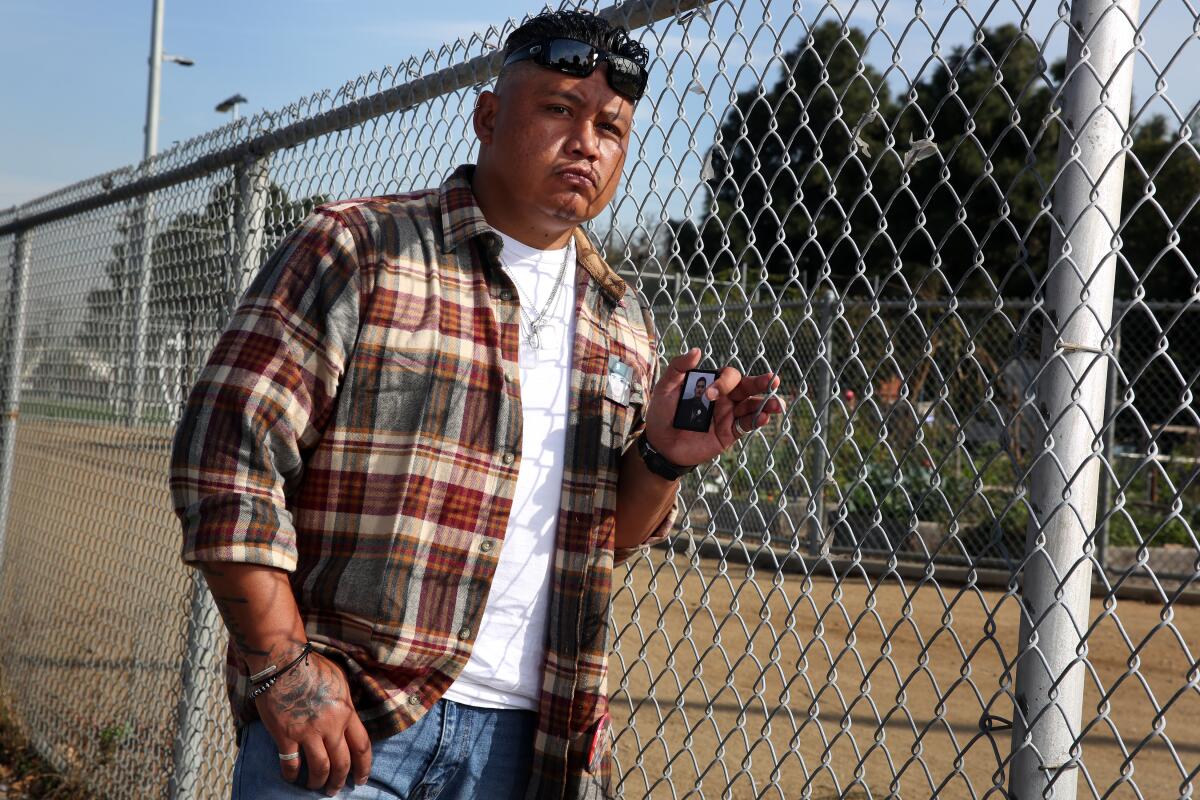
In late November, the city surpassed 300 homicides in a single calendar year, for the first time since 2009. One week in December saw 14 homicides and 45 shooting victims, versus four homicides and 17 shootings in the same week in 2019. On Friday morning, the unofficial tally of 2020 homicides stood at 349 — an increase of nearly 38%, and almost 100 victims, from the previous year.
Vernon said data suggest that more gunmen are getting out of their cars and shooting multiple targets at once, at close range, and that more people are driving around with guns at the ready. Both trends suggest to him that gunmen in L.A. are simply less afraid of being caught by police than they used to be — which he blames in part on a decision to reduce pretextual stops in high-crime neighborhoods after criticism about racial profiling, and in part on major protests this year that drew police resources away from those neighborhoods.
As of the start of December, arrests and police stops were both down more than 25% from 2019, with violent crime arrests down more than 11%. Calls for service were down about 5%.
LAPD Chief Michel Moore largely halted the practice of pulling over random vehicles — often in predominantly Black and Latino communities — after a Times investigation raised questions about their efficacy. Moore at the time said the practice was not effective, netting about one arrest for every 100 cars stopped.
Police officials also have pointed to gang violence as a major factor in the increased shootings in 2020, which have commanded growing attention from city and community leaders in recent weeks, and say it should serve as a warning to City Council members and other officials of what may come if they continue down a path of laying off police officers amid the city’s growing financial woes.
“I cannot say enough that cops count, police matter, the presence of our officers in communities makes a difference,” Moore said in an interview about the violence.
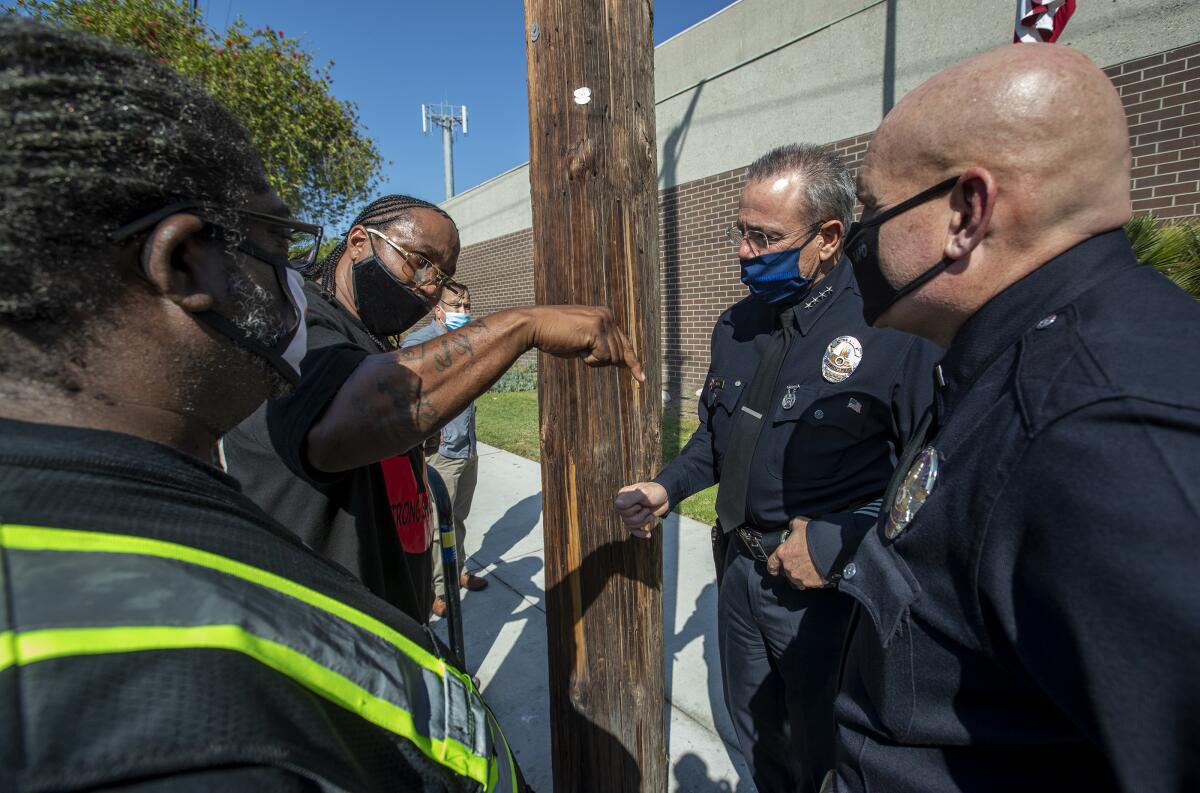
Moore said the city has seen shootings and homicides rise most dramatically in “the very disadvantaged neighborhoods most impacted by the pandemic,” which have been predominantly Black and Latino.
“Nearly all of the loss of life and shooting victims are centered in the Black and brown communities. The lack of jobs and supportive services, a sense of hopelessness, easy access to firearms and ineffective parts of the criminal justice system have created a perfect storm to undermine public safety gains built over the last decade,” Moore said.
He suggested that building back the social infrastructure that has been crippled by the pandemic is critical to reducing the violence, but so too are prevention and intervention efforts by police, “real consequences” for gun offenders and “keeping individuals involved in gun violence out of our neighborhoods.”
Critics of the police, meanwhile, say what is needed to stem the tide of violence is not more officers but more funding for social services for the poor, the homeless and those suffering from mental illness and addiction — funding they say should be taken out of the LAPD’s multibillion-dollar budget.
They argue that shifting resources to services that pull people out of poverty and provide them with income and housing would do far more toward curbing crime than putting more police on the streets. California and Los Angeles residents have in recent polling showed a similar desire to see some LAPD funding redirected to social services.
The LAPD’s budget was cut by $150 million this summer, as protests raged, and the department is planning for more than 350 officer layoffs as part of an effort by city leaders to close a $650-million deficit caused by the pandemic’s economic devastation.
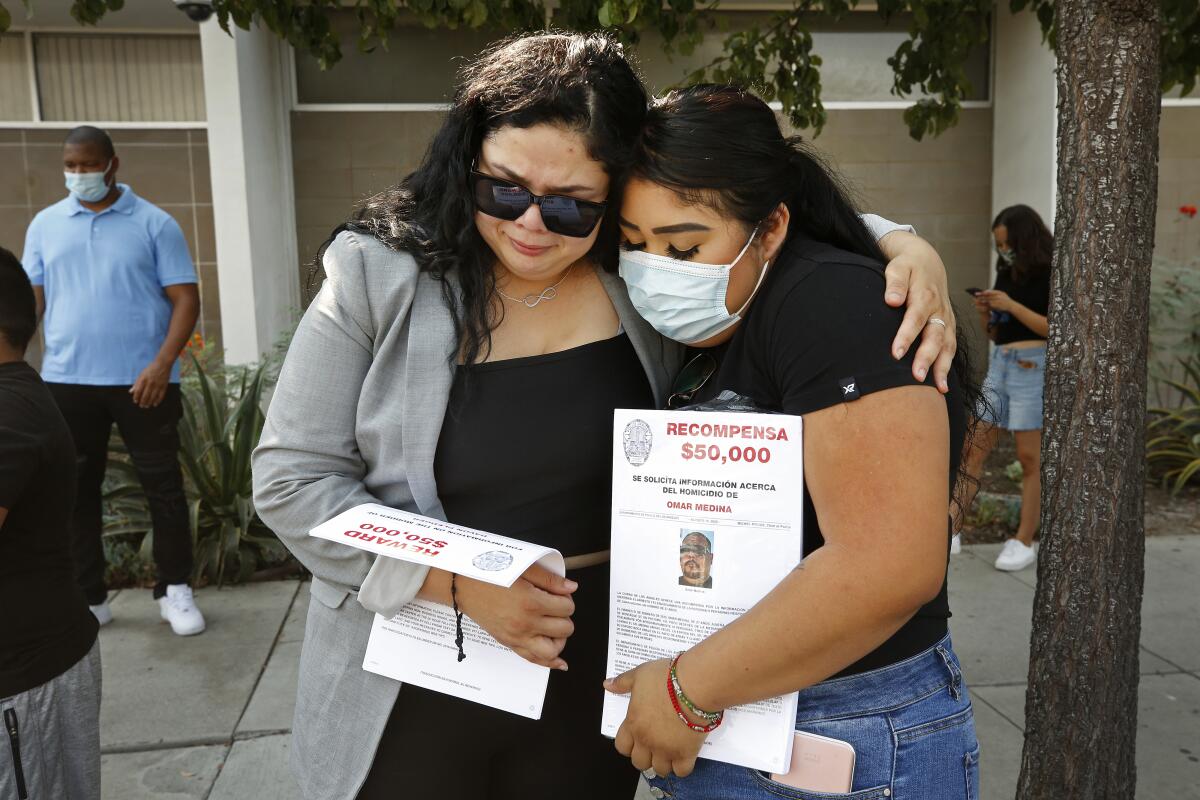
The increased violence has been a major talking point among leaders of the city’s police union in arguing against such cuts; they say Los Angeles is playing with fire by reducing police ranks at precisely the wrong time.
Police supporters have increasingly tried to frame violence as a local issue, or the fallout of some rejection of police locally, but L.A. is far from alone in experiencing a violent crime surge in 2020 — or in searching for answers. Similar conversations are playing out nationally, according to David Abrams, a professor at Penn Law who has tracked 2020 crime trends in other cities.
Abrams said national data suggest that localized theories for crime shifts should be treated with skepticism and that national explanations — linked to the shared devastation from COVID-19 — are far more likely. For example, many of the declines in crime correlate directly with a decrease in mobility — which can be traced looking at cellphone data — as stay-at-home orders were issued across the country, Abrams said.
“A big reason in this drop in crime is people not going out,” he said. “There are not as many targets for crimes that need victims.”
Less clear are the causes for the nationwide increases in shootings and homicides, which are not explained by mobility, he said.
There are a range of theories about the spike, including increased economic uncertainty, sharp rises in unemployment, massive protests diminishing the effectiveness or proactiveness of police and changes in the criminal justice system that sent incarcerated or arrested individuals back to the streets.
Abrams said he is less convinced by the theories around incarceration, given that crime is actually down in many categories, and more convinced that the causes are economic.
“The pandemic changes everything about the world, so this equilibrium gets shaken up,” he said. “You’ve got this period now without an equilibrium, and maybe one of the ways that shows up is this heightened number of homicides and shootings.”
It’s just a theory, he said, and the truth is that academics will be studying 2020 crime for years to come. Answers will take time, and some patterns in crime this year may never be fully understood, he said.
Academics, police and local advocates alike said they are particularly concerned about the accuracy of the data, especially around domestic violence.
Vernon said year-over-year reports of domestic violence and child abuse are both down or flat — not what he would have expected with more people at home and many drinking alcohol and experiencing financial stress. He said he wonders whether the reporting data accurately reflect reality.
Patti Giggans, executive director of Peace Over Violence, said calls to her organization’s hotline for sexual assault are down by about 25% — perhaps a result of people socializing and going out less — but domestic violence calls are up 45%-50%.
One woman called while hiding from her husband in her garage; another called during the rare few moments she had apart from her spouse. Women have expressed hesitance to leave abusive relationships this year because they fear moving in with others or going to a shelter amid the COVID-19 outbreak, Giggans said.
“They’re feeling trapped, because they say, ‘I can’t go anywhere,’” she said.
A city-funded program called Project Safe Haven provided funding for Giggans’ group to house families in such situations, but the funding was set to end with the new year, she said.
With women and children separated from work, school and other environments where the reporting of abuse often occurs, such violence may be dramatically undercounted this year, Giggans added.
“We won’t know until we move out of this pandemic,” she said, and some incidents may never come to light.
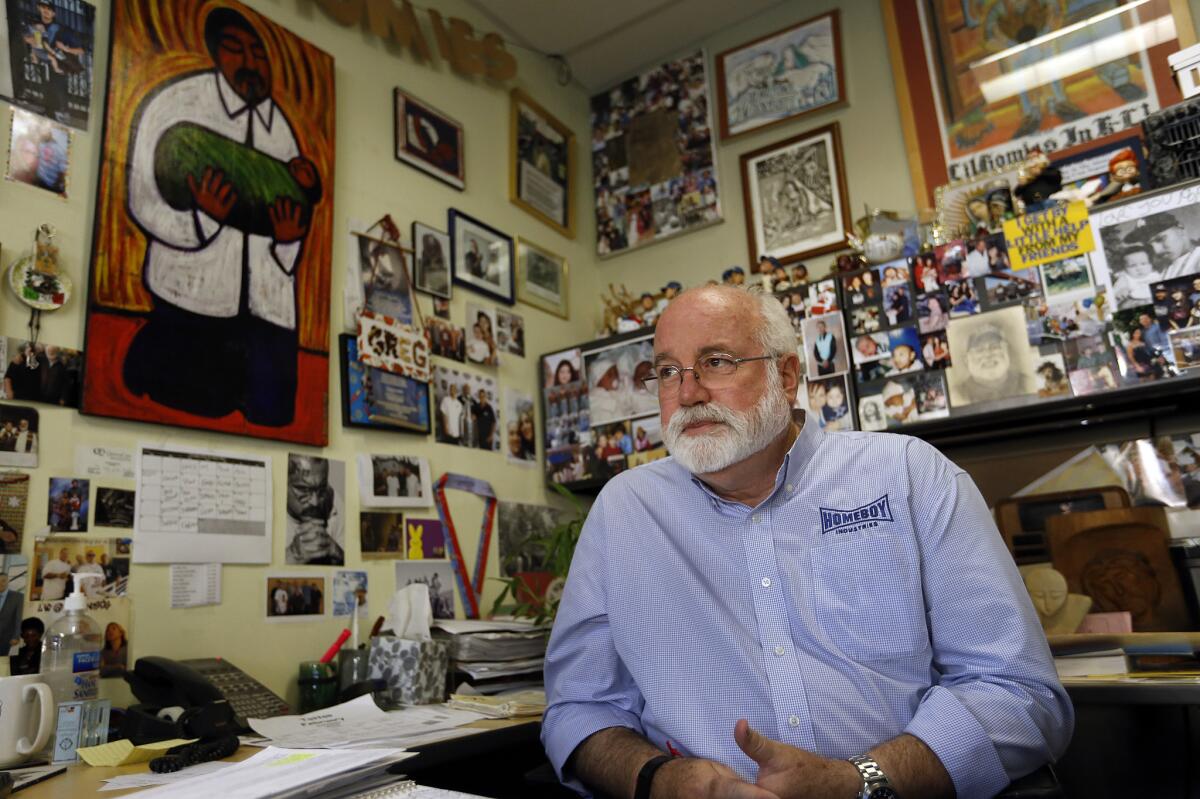
Father Greg Boyle, who has run gang intervention programs for many years as head of Homeboy Industries, said anyone surprised by rising violence during a pandemic that “has wreaked havoc on the economy” isn’t paying attention, and those who think it will be solved through policing alone are kidding themselves.
“Gang violence is a language. It’s about a lethal absence of hope, it’s about despair, it’s about trauma that doesn’t get attended to, it’s about mental health issues,” he said. “It’s not rational: Like, ‘It’s all about retaliation’ or ‘You can draw a straight line between gang violence and budget cuts’ — all that stuff is silly.”
The year’s violence must be viewed instead as “a resurgence in a lethal absence of hope, which has been exacerbated by the pandemic and the economy cratering,” Boyle said. “Infuse hope into these communities, and see what happens to the homicide rate.”
More to Read
Sign up for Essential California
The most important California stories and recommendations in your inbox every morning.
You may occasionally receive promotional content from the Los Angeles Times.

